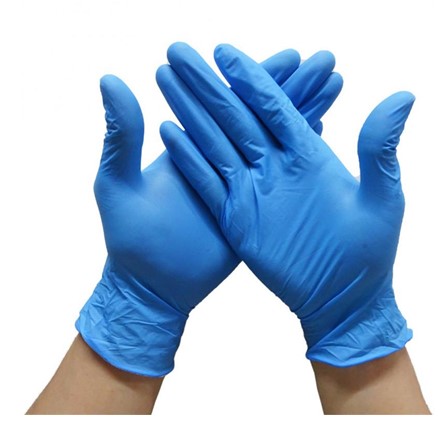Is it the employer's fault or the victim's? Who is responsible for violating occupational safety regulations?
The number of industrial accidents is declining year after year, but remains a serious problem for some employers. The newspaper explored what helps zero-injury companies achieve this result.
Occupational safety is everyone's businessMINSK Refrigerator Plant JSC "Atlant" is one of many companies with a virtually zero occupational injuries rate. How did they achieve this?
"Every team in the production workshops has a public occupational safety inspector. There are about a hundred of them," explains Yuri Malko, chairman of the primary trade union organization of MZKh ZAO "Atlant." "The inspector's job is daily monitoring: they come to their area and check on the order. We believe that if each inspector prevents at least one accident by reprimanding a colleague who violates the rules, then their work is worthwhile."
Atlanta employs approximately 4,500 people, and the occupational safety department has five employees. Public inspectors are there to assist them.
"Inspectors have a primary job description; they perform shift work depending on their wage structure," explains Georgy Kishchuk, chief technical labor inspector for the BELPROFMASH trade union. "Public oversight occurs at specific times specified in collective agreements. Only a qualified specialist capable of effectively monitoring the necessary processes can become an inspector."
The plant holds a competition among public inspectors. The winners advance to the regional stage, then to the national stage. Prizes are awarded to the winners, recognizing the importance and recognition of their occupational safety activities.
Nikolai Sviridovich, foreman of Section 43, Brigade 49, is one of the public inspectors. He works in the refrigerator assembly shop. In 2019, he won the Republican Trade Union Competition for Best Public Occupational Safety Inspector in the category for companies with over 3,000 employees.
“For many years I’ve been combining two jobs – as a foreman and a public occupational safety inspector,” says Nikolai Yakovlevich. “First and foremost, I make sure that the team uses personal protective equipment: special clothing, safety shoes,Gloves , and when working with pneumatic tools, goggles and arm protectors. I ensure that people comply with occupational safety regulations and cross conveyor belts in designated areas, maintain order in their work areas, and avoid scattering parts or other violations.
- Do people follow these rules?
"Of course! If I make comments, they're followed without question," says Nikolai Sviridovich.
We walk through the plant grounds, observing the introductory safety briefing for new employees and the equipment inspection. Inspectors stop a forklift and ask the driver for identification.
"We check the technical condition of the forklift, the operation of the lights, and the procedure for authorizing the driver to participate in traffic," explains Georgy Kishchuk, chief technical labor inspector for the BELPROFMASH trade union. "The employee must have a driver's license and a waybill with a stamp indicating they have passed a pre-shift medical examination. Everything is in order."
Georgy Kishchuk emphasizes that there are no occupational safety issues at Atlant, but even so, inspections are inevitable:
We come here once or twice a year. The company is one of the best in the industry in terms of occupational safety and production management. This is thanks to those who organize the work, from management to the foremen. The trade union also makes a significant contribution, implementing public oversight and participating in daily, monthly, and quarterly monitoring activities with the employer. This work is bearing fruit.
As we leave the facility, we ask the inspectors: What should someone do if they're not as lucky as the Atlantov workers, and management is more lax about occupational safety?
"By law, he has the right to notify his supervisor in writing that safe working conditions haven't been created and to refuse to perform his duties," replies Georgy Kishchuk. "After that, he can stop working, but remain at his workplace until the equipment is repaired. He can also contact the trade union committee at the plant or higher up—either in writing, orally, by phone, or anonymously. We'll go to the site and investigate the situation; we can shut down a machine or an entire production line if safety isn't ensured. All issues are resolved."
Percentage of guiltOfficial data from the Ministry of Labor and Social Protection for last year shows that the number of workplace injuries decreased by 5%. Whether this is a significant decrease or not was the question asked of Alexander Semich, DIRECTOR of the Department of State Labor Inspection.
"Even a 5% reduction is significant. Every injury affects a person's HEALTH or life," he believes. "In recent years, we've seen a general trend toward a reduction in injuries. This is the result of targeted work at all levels: at the industry level, by ministries and corporations; at the regional level, by local executive and regulatory bodies; and at the national level, by the Department of State Labor Inspection. Trade unions play a significant role."
What's more important for workplace injuries? Workers violating safety regulations or employers cutting corners?
- 14% of general injury cases are due solely to the employer's fault, 34.3% are due to the fault of the injured party, and in almost 5% of cases, both parties are held accountable. In 47.4% of cases, neither the injured party nor the employer are at fault. For example, a worker might be walking along a smooth corridor floor, trip, and fall. This figure also includes traffic accidents where a person was crossing the road at a green light and was hit by a car, unpredictable animal behavior, and natural disasters.
- Which professions are considered the most dangerous?
- Based on the number of injured, the most common occupations are car drivers, mechanics, livestock breeders, laborers, tractor drivers, and milking machine operators. These are primarily professions that involve a high proportion of manual labor. Drivers and tractor drivers typically sustain injuries while performing repairs and other tasks, such as changing tires or attempting to repair broken attachments in the field.
The top three most hazardous occupations have remained unchanged for over five years: construction, agriculture , and industry. This is primarily due to the fact that construction workers and agricultural cooperative workers lack a permanent workstation.
A characteristic figure in the overall injury rate column is length of service. One in three injured workers had been working in their profession for less than a year, and this can be attributed to deficiencies in training or lack of experience. However, 30% of cases occur among workers with more than 10 years of experience. This is where the ego kicks in: "I'm a professional, nothing will happen to me!"
How relevant is the problem of drunk driving injuries in Belarus?
- Presidential Directive No. 1 of March 11, 2004, signed almost 20 years ago, has significantly reduced the incidence of drunk driving injuries. In 2004, over 40% of those killed at work were intoxicated.ALCOHOL intoxication is currently no more than 10%. In the first half of 2023, we conducted a survey of all organizations where similar incidents occurred in 2022. Today, oversight activities are carried out using a risk-based approach. This year, a new criterion was added: if an accident occurs at a company while under the influence of alcohol, this is an additional risk factor, increasing the likelihood of a random inspection.
"Drunken" injuries speak volumes. Something's wrong with work discipline—the employer isn't enforcing it, and the primary trade union isn't doing its job. Plus, due to our mentality, it's extremely rare for someone to drink alone, and it's even more unlikely that colleagues wouldn't notice someone's groggy.
How does the injury situation in Belarus compare to other countries?
Many European countries don't publish injury statistics. Furthermore, each country has its own calculation methodology. In Belarus, an industrial accident is defined as an injury resulting in at least one day of disability. In Finland, it's defined as three or more days. In Poland, for example, accidents involving farmers aren't considered industrial accidents.
According to ILO figures, the level of industrial injuries (the number of victims per 100,000 workers) in Belarus is comparable to European countries with a similar economic structure.
- Should penalties for violating occupational safety regulations be increased?
It's necessary to increase the effectiveness of economic incentives for employers to ensure healthy and safe working conditions. Such a mechanism exists. It's contained in Presidential Decree No. 531 of August 25, 2006. This regulation establishes discounts and surcharges on the insurance rate for compulsory insurance against industrial accidents and occupational diseases. If an employer's working conditions are better than the national average, they will receive a discount on the insurance rate; if they are worse, they will receive a surcharge. This mechanism has a reserve.
Furthermore, administrative liability (in the form of a fine) is provided for employer officials for violating occupational safety regulations. And, starting in March 2021, administrative liability has also been established for the employee themselves.
A specific situation: an individual was injured at work and became incapacitated. They are entitled to a corresponding payment from Belgosstrakh. However, Presidential Decree No. 530 of August 25, 2006, stipulates that if the injured party's gross negligence resulted in or increased the damage, the monthly payment may be reduced proportionally to the victim's degree of fault, but by no more than 50%.
For example, a person sustained a complex fracture of a limb, resulting in permanent disability. Their degree of fault is determined to be 20%. As a result, their monthly payments from Belgosstrakh will be reduced by 20%.
I also believe that more widespread awareness-raising efforts are needed. Our people don't always understand the social and economic consequences of the carelessness they sometimes commit on a daily basis in the workplace. Almost every company has a list of reasons for depriving bonuses. But few organizations provide incentives for employees who work without violations. For example, the collective agreement at the Grodno Tobacco Factory stipulates that if the company operates for the entire year without injuries, everyone will receive an additional payment in their 13th salary. Employees understand that they must not only comply with occupational safety regulations themselves but also ensure that their colleagues are not injured.
- What should you do if management believes that an employee is to blame for an injury, but the employee disagrees?
An accident investigation ends with the preparation of a Form H1 report. Sometimes an employee sees that the employer attributes one or only cause to the victim's violation of occupational safety regulations (for example, failure to wear protective goggles), and the employee disagrees. Section 14 of the Form H1 report specifies the percentage of gross negligence that reduces compensation.
To challenge an employer's decision, you must contact a department of the State Labor Inspectorate. The deadline is three months, beginning from the day the employee became aware of the violation of their rights. Most often, this is the date the H1 report is issued and signed in the "Accident Registration Log." If the deadline is missed, you must go to COURT . If there are valid reasons, the court may reinstate the missed deadline. Furthermore, the injured party or their representative has the right to participate in the accident investigation. A dissenting opinion can be expressed in the H1 report.
A draft Council of Ministers resolution has been prepared that will amend the procedure for investigating accidents. One of the changes is the employer's obligation to inform the employee that an investigation has begun and that the employee has the right to participate. Currently, employees are often unaware that such an investigation is underway.
According to the International Labour Organization (ILO), approximately 2.3 million people die annually as a result of workplace accidents worldwide. At the same time, approximately 340 million industrial accidents are recorded.
Globally, the rate of injuries per 100,000 workers is 11.3; in the EU-27 countries it is 3.6; in RUSSIA and the usa it is 4.5 and 4.6, respectively; in Belarus it is 3.4.
From 1993 to 2022, the total number of injuries per 100,000 cases in Belarus decreased from 430 to 47.41. The number of deaths decreased more than threefold.
Alexey GORBUNOV,
Photo by Ramil NASIBULIN,
newspaper "7 days".





















































